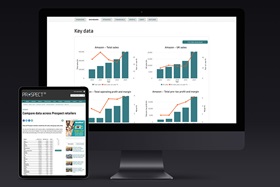For businesses that provide content to members, subscribers and readers, moving with our mobile times can present some challenges, but the opportunities are worth the effort.

smart phone
75% of adults in the UK own a smartphone, and the average adult spends 110 hours online every month. Even the most stunning content needs to be available in the digital world in order to add value to audiences, and today this means digitally adaptable content for the web and for mobile devices. The upside of this increasingly mobile world is that if you can connect with audiences on any platform - that same piece of content that you have created once can be instantly re-versioned to become the catalyst for audience engagement, the trigger for retention, and the opportunity for selling new products and programmes across any or all of your digital channels.
If you’re not already on the path to mobilising your content, it’s not as hard as you might think. Below we outline a few areas for attention in optimising content delivery for mobile devices – it’s time to get smart for smartphone users.
Respond to consumers with responsive design
Mobile consumers want access to content on the go, but they also expect a slick experience when they consume and browse this content. We’ve all been there, waiting for a good enough signal to check out some information on the move. And we’ve all experienced the disappointment when the page finally loads, but what you actually wanted is another click away. Time, form and function can be addressed with responsive design for any device.
Your mobile presence needs to be easy to use and easy on the eye. Responsive design ensures that the appearance and structure of your content adapts to suit the device on which it displayed and when your users request content on a smartphone it will load quickly, it will be easily viewable and further browsing will be simple.
Mobile commerce – turn on the ability to buy on the move
Responsive design also enables a better m-commerce experience – buying products, content, rights and subscriptions on smartphones and tablets is an increasingly popular means of purchase, and an important source of revenue. Previously consumers might have only used mobiles to browse, but today they’re using them to buy. Juniper Research reports mobile devices will account for 30 percent of global retail e-commerce spending by 2018.
We’re also seeing the same trend with Abacus’ customers – one of our clients recently reported an increase in online purchasing of over 20% year-on-year, where mobile and tablet devices had driven the growth faster than desktop driven purchases.
Content owners should not only look at delivering content responsively for mobile devices but also adapting transaction and payment pages to take mobile orders and process purchases. Your mobile audience certainly wants access to content and information, and it’s a natural extension of their experience to be able to renew subscriptions or purchase new products through the same device.
Keep your content consumers ’appy
Apps have huge potential not only because they optimise the experience of your members and viewers on mobile devices, but also because they offer a range of new opportunities to drive audience engagement and revenues that the desktop cannot.
First of all, apps can be sold as a separate product and become a source of revenue in their own right. More commonly, they can also be used to enhance content that your subscribers or members are already receiving. Making your audience comfortable consuming your content in the context of an app lays the groundwork for you to then cross and upsell new content and products through this channel.
In digital terms, apps tell a consumer or member that your organisation has its finger on the digital pulse, which in turn can influence their propensity for retention, loyalty and digital engagement. Publishers certainly understand this potential, with 72% of B2B publishers aiming to offer app-based content by 2015.
A great mobile experience will make it more likely that your customer will seek out additional digital content, or request new digital products. Apps also allow for creativity with a range of smartphone features that enable content owners to create a unique experience for their consumers – for example, an architectural publication or member association could enable users to explore drawings and diagrams in detail on smartphones and tablets by using the pinch-to-zoom feature. Apps also offer new real-estate for media and promotions, rapid transactions and the opportunity to gate premium content simply and effectively.
Mobile platforms and the use of mobile devices are not going to go away. Whatever your digital objective, there are a plethora of opportunities to take advantage of. There’s more to discuss than one blog can handle, so do get in touch and let’s talk about mobilising your content.




